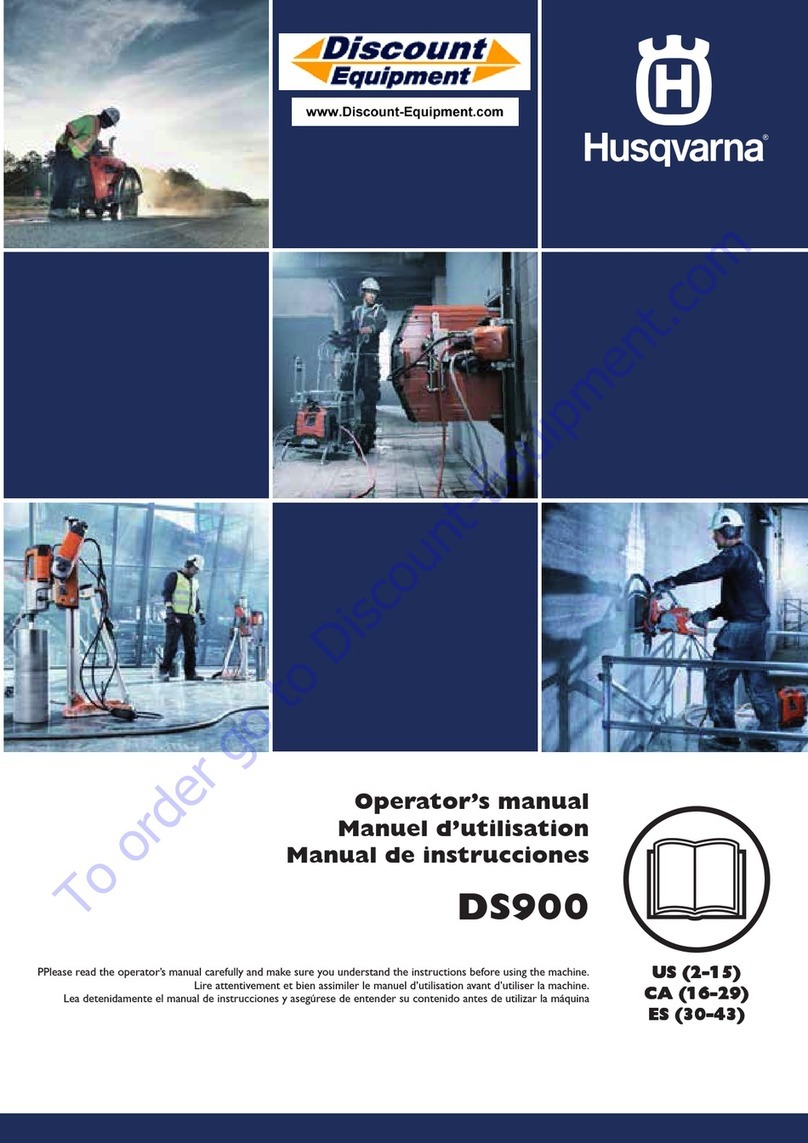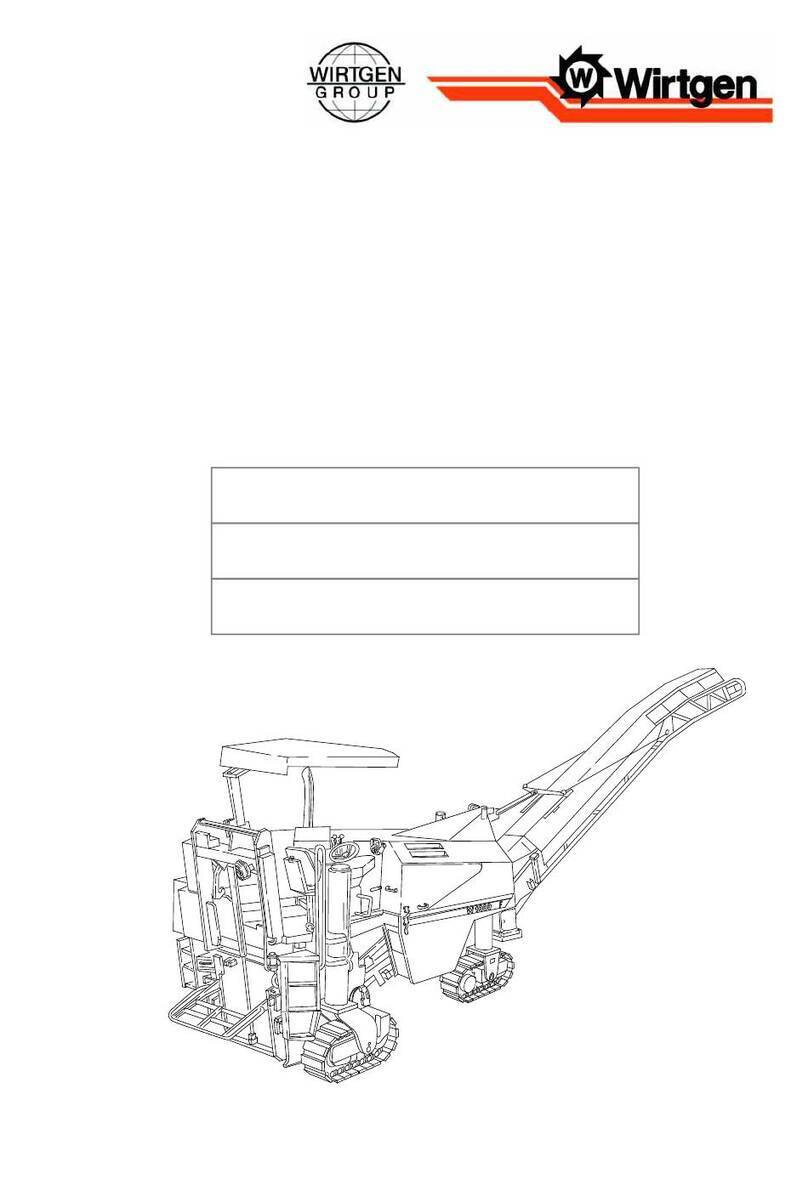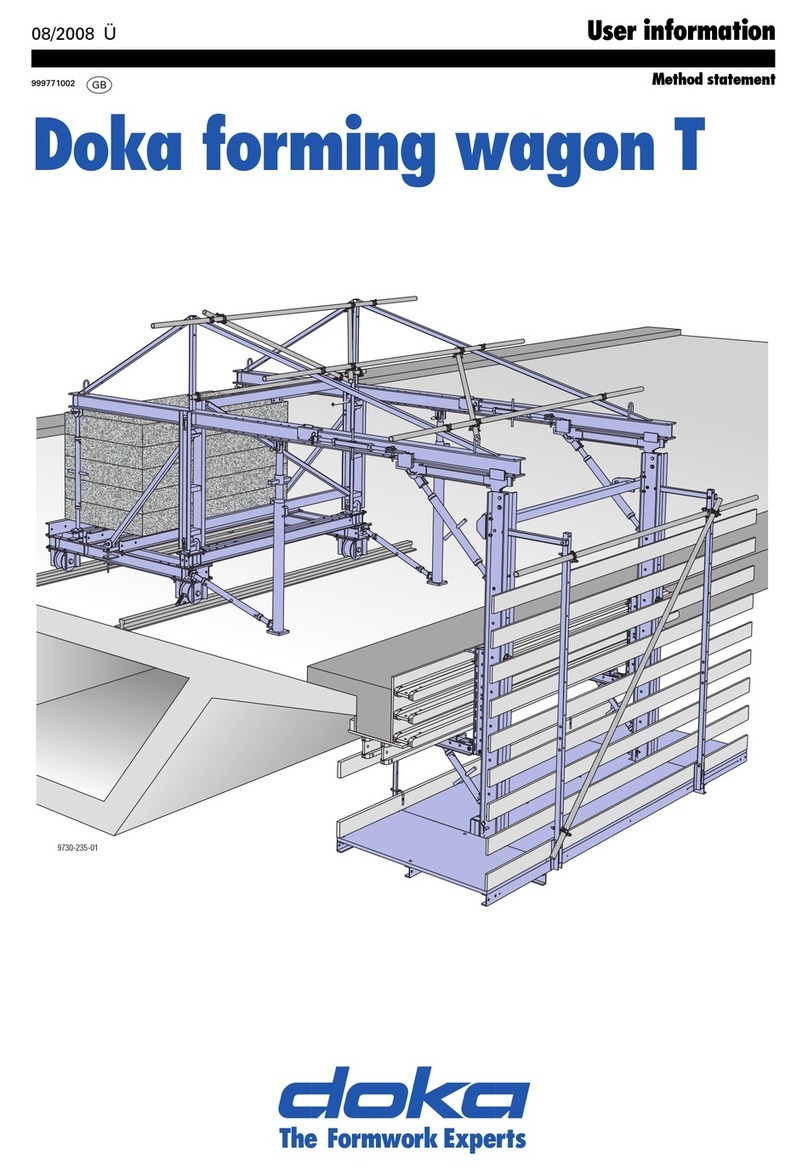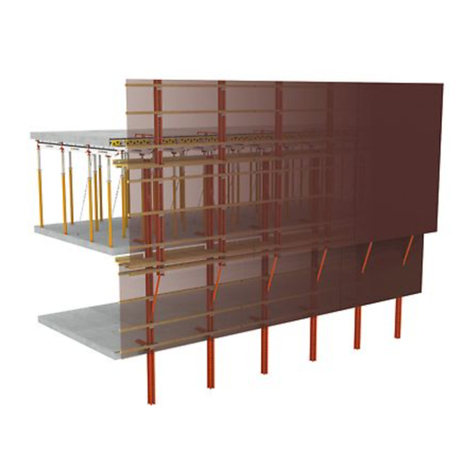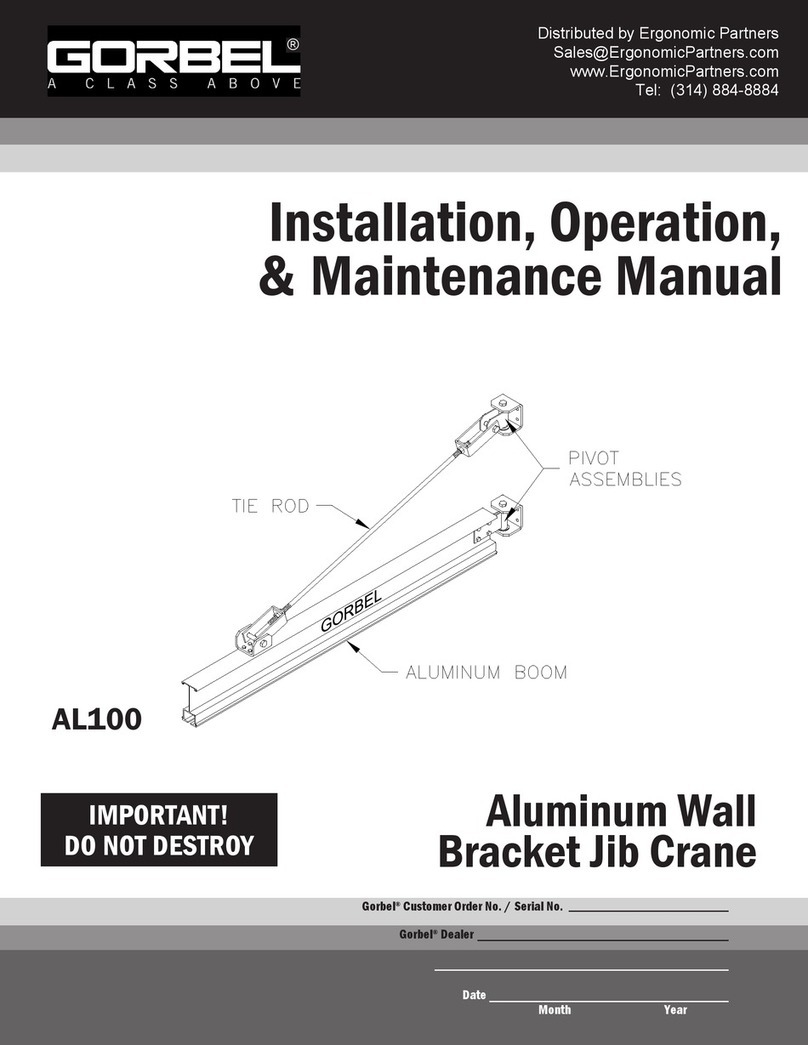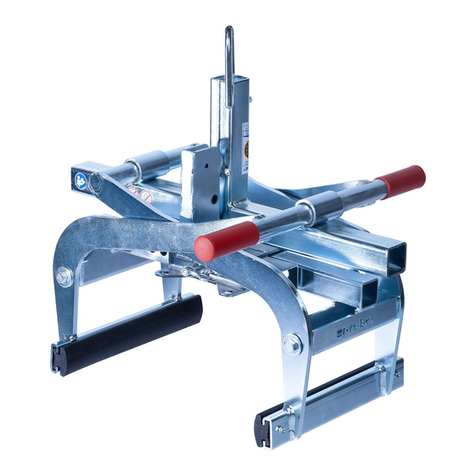Proseries GSSIPRO Quick reference guide

READ ALL INSTRUCTIONS AND WARNINGS BEFORE USING THIS PRODUCT
OSHA
S
C
A
F
F
O
L
D
I
N
G
ANSI
MEETS CODE A10.8
This manual provides important information on proper operation and maintenance. Every effort has been made to
ensure the accuracy of this manual. We reserve the right to change this product at any time without prior notice. IF
THERE IS ANY QUESTION ABOUT A CONDITION BEING SAFE OR UNSAFE, DO NOT USE THIS PRODUCT!
QUESTIONS? PROBLEMS? CALL CUSTOMER SERVICE AT 1-636-532-9888
If you need instructions on how to use this item properly, experience a problem, or need parts, call our customer
service department Monday-Friday, 8 AM - 4 PM Central Time. A copy of the sales receipt is required.
NOTE: This scaffold can be used indoors or outdoors on an even, flat surface. Do not store the scaffold
outdoors, as the wood platform is not water resistant. This item is not compatible with stem jacks.
WARNING: METAL CONDUCTS ELECTRICITY
Do not use this equipment where contact may be made with power lines or other live electrical circuits.
WARNING: DO NOT OVERLOAD THE MAXIMUM WEIGHT CAPACITY
This unit can support a maximum weight capacity of 1,000 lbs. The max load capacity decreases when stacking
units: One unit high = 1,000 lb, Two units high with guardrails = 938 lb, Three units high with guardrails = 831 lb.
ITEM # GSSIPRO / GSSICARB / GSSI
MULTI-USE 6 FT BAKER-STYLE INTERIOR/EXTERIOR SCAFFOLDING
SAFETY, ASSEMBLY & OPERATING INSTRUCTIONS
1,000 LB MAX WEIGHT CAPACITY WORKERS & MATERIALS
Features non-slip walkboard GSSICARB is TSCA Title VI Compliant

●Read and follow the assembly instructions. Make
sure the scaffolding is assembled properly.
●Always inspect the scaffold before use. Do not use if
it is damaged or missing parts.
●Do not use this equipment if you are in poor health,
taking medications, drugs, or have been consuming
alcohol, all of which may impair your ability to work
safely on this product.
●Casters must be in the locked position, with the
locking pins inserted, when in use.
●Lock casters, braces and deck before each use. The
deck must be installed fully within the scaffold braces
and locked with the security latches before each use.
●Inspect the wood deck before use. The deck must be
checked for loose or missing steel frame components,
large holes or thin spots where the plywood has been
worn. Replace worn or damaged deck promptly.
●Scaffold and braces must be inspected to ensure
locking mechanisms are working correctly. Any brace
with damaged locking devices should not be used.
●Always use outriggers and guardrails when stacking
units. Guardrails must be installed on all open sides of
a work deck when stacking two or more units.
●Do not climb unless all casters are in locked position.
Remove casters when using this scaffolding on stairs.
●Do not modify the scaffold or any of its components.
●Always keep three points of contact with the ladder.
Always climb up or down the scaffolding side frames
facing towards the ladder. Always keep the body
centered between the side frame’s uprights.
●When climbing from the exterior, always step over
the ladder to access the platform. Always keep the
body close to the ladder.
●This scaffold must be used on a firm surface that is
free of pits, debris, holes or obstructions. Never place
anything under or attach anything to this scaffold to
increase height or to adjust to uneven surfaces.
●Acids are corrosive and can seriously affect strength.
Do not expose this scaffold to corrosive substances.
●Store and use the scaffold in a dry area to prevent
damage to wood decking.
●Keep your body close to the scaffold as you climb.
Do not overreach. Always keep body centered inside
structure of scaffold.
●Remove or fasten all tools, material or equipment
before moving. Use extra caution when moving to
avoid tipping.
●Never try moving this scaffold while standing on it.
●Do not use if the surface is not firm and level. Do not
use in inclement weather or high winds. Maintain a firm
grip while climbing.
●Do not use the scaffold as a footbridge.
ITEM # GSSI
MULTI-USE 6 FT BAKER-STYLE INTERIOR/EXTERIOR SCAFFOLDING PAGE 2
SAFETY INSTRUCTIONS
QUESTIONS? PROBLEMS? CALL CUSTOMER SERVICE AT 1-636-532-9888
If you need instructions on how to use this item properly, experience a problem, or need parts, call our customer
service department Monday-Friday, 8 AM - 4 PM Central Time. A copy of the sales receipt is required.
WARNING: DO NOT OVERLOAD THE MAXIMUM WEIGHT CAPACITY
NOTE: This scaffold can be used indoors or outdoors on an even, flat surface. Do not store the scaffold
outdoors, as the wood platform is not water resistant. This item is not compatible with stem jacks.
This unit can support a maximum weight capacity of 1,000 lbs.
1,000 LB
MAX WEIGHT CAPACITY
WORKERS & MATERIALS
The max load capacity decreases when stacking units: One unit high = 1,000 lb,
Two units high with guardrails = 938 lb. Three units high with guardrails = 831 lb.

Locate and identify all individual parts.
Follow the diagrams for proper assembly.
If you need instructions on how to use this item
properly, experience a problem, or need parts,
call customer service at 636-532-9888
Monday-Friday, 8 AM - 4 PM Central Time.
ITEM # GSSI
MULTI-USE 6 FT BAKER-STYLE INTERIOR/EXTERIOR SCAFFOLDING PAGE 3
ASSEMBLY INSTRUCTIONS
Item Part Name Qty
A Frame 2
B Side Brace 2
C Platform 1
D Caster 4
E Lock Pin 4
F Connector Pin 8
G Platform Locks are built into Side Brace
Insert a Connector Pin
at each corner to secure
Side Brace to Side Frame.
Pin Is Fully
Engaged
(Locked)
Pin Is
NOT Fully
Engaged
Lock all four Casters
by pressing firmly with
shoe.
Insert Wood Platform,
firmly position it on top
of both Side Braces.
Stand the second Side
Frame to connect the
first Side Frame.
Lock the Side Brace
into position by using
the Lock Pins.
Attach remaining Side
Brace on opposite side.
Make sure that all four
Lock Pins are secure
and in LOCKED position.
Insert casters into each
leg, then secure each
with the Connector Pin.
Position Side Frames
on a flat surface and
locate the Side Braces.
Attach one Side Brace to
top of Side Frame, then
secure it with the Lock Pin.
Rotate one Side Frame
to connect Side Brace
to other Side Frame.
Rotate the two Platform
Locks to secure the
wood platform.
AA B C D
AE F G H
AI J K L
WARNING The Lock Pins must
be fully inserted into holes. Follow
the diagram to confirm that all
Lock Pins are properly inserted.
B
B
C
F
F
F
EE
A
A
D
F
F
G
G
D
F

●Follow assembly instructions to be certain the
scaffolding is properly set up.
●Inspect scaffold before use. Do not use if it is
damaged or if it is missing parts.
●Always use outriggers and guardrails when
stacking units.
●Do not use this equipment if you are in poor health,
taking medications, drugs, or have been consuming
alcohol, all of which may impair your ability to work
safely on this product.
●Be certain the casters are locked to the side frames
using connector pins.
●Be certain all four casters are in LOCK position
when standing on the scaffold.
●The deck must be fully seated within the braces and
locked with the Platform Locks before each use.
●The wood deck must be checked for loose or missing
steel frame components, large holes or thin spots
where the plywood has been worn. Worn or damaged
deck must be replaced promptly.
●Guard rails must be installed on all open sides of deck
where a person could fall from height of 6 feet or more.
ITEM # GSSI
MULTI-USE 6 FT BAKER-STYLE INTERIOR/EXTERIOR SCAFFOLDING PAGE 4
OPERATING PREPARATION
12 foot standing height
Reach
up to
18 Ft. High
Reach
up to
24 Ft. High
2 Story
Scaffold
Tower
GSPIN
Connector Pins
Set of 4
GSGRSU
Scaffolding
Guard Rail System
GSSI-C54P
Swivel Casters
Dual Locking
Set of 4
GSORWCS
Outrigger Set
Non-adjustable
Casters Included
16 inch
Set of 4
SCAFFOLD ACCESSORIES Order these accessories from your local or online retailer.
GSAOSET
Outrigger Set
Adjustable Extension
Casters Not Included
9 settings 20" - 33"
Set of 4
ITEM # TOWERINT
SCAFFOLD CONFIGURATIONS Order these scaffold configurations from your local or online retailer.
3 Story
Scaffold
Tower
ITEM # TOWERINT3
16.5 foot standing height

CODE OF SAFE PRACTICES FOR FRAME SCAFFOLDS, SYSTEM SCAFFOLDS,
TUBE AND CLAMP SCAFFOLDS & ROLLING SCAFFOLDS
DEVELOPED FOR INDUSTRY BY SCAFFOLD INDUSTRY ASSOCIATION, INC.
It shall be the responsibility of all users to read and comply with the following common sense guidelines which are designed to promote safety in the erecting,
dismantling and use of Scaffolds. These guidelines do not purport to be all-inclusive not to supplant or replace other additional safety and precautionary
measures to cover usual or unusual conditions. If these guidelines in any way conflict with any state, local, federal or other government statute or regulation,
said statute or regulation should supersede these guidelines and it shall be the responsibility of each user to comply therewith.
I. GENERAL GUIDELINES
A. POST THESE SCAFFOLDING SAFETY GUIDELINES in a conspicuous place and be sure that all persons who erect, dismantle or use scaffolding are
aware of them.
B. FOLLOW ALL STATE, LOCAL, AND FEDERAL CODES, ORDINANCES AND REGULATIONS pertaining to scaffolding.
C. SURVEY THE JOB SITE. A survey shall be made of the job site for hazards, such as untamped earth fills, ditches, debris, high tension wires, unguarded
openings, and other hazardous conditions created by other trades. These conditions should be avoided as noted in the following sections.
D. INSPECT ALL EQUIPMENT BEFORE USING. Never use any equipment that is damaged or defective in any way. Remove it from the job site.
E. SCAFFOLDS MUST BE ERECTED IN ACCORDANCE WITH DESIGN AND/OR MANUFACTURERS’ RECOMMENDATIONS.
F. DO NOT ERECT, DISMANTLY OR ALTER A SCAFFOLD unless under the supervision of a qualified person.
G. DO NOT ABUSE OR MISUSE THE SCAFFOLD EQUIPMENT.
H. ERECTED SCAFFOLDS SHOULD BE CONTINUALLY INSPECTED by users to be sure that they are maintained in safe condition. Report any unsafe
condition to your supervisor.
I. NEVER TAKE CHANCES! IF IN DOUBT REGARDING THE SAFETY OR USE OF THE SCAFFOLD, CONSULT YOUR SCAFFOLD SUPPLIER.
J. NEVER USE EQUIPMENT FOR PURPOSES OR IN WAYS FOR WHICH IT WAS NOT INTENDED.
K. DO NOT WORK ON SCAFFOLDS if your physical condition is such that you feel dizzy or unsteady in any way.
I. GUIDELINES FOR ERECTION AND USE OF SCAFFOLDS
A. SCAFFOLD BASE MUST BE SET ON AN ADEQUATE SILL OR PAD to prevent slipping or sinking and fixed thereto where required. Any part of a
building structure used to support the scaffold shall be capable of supporting the maximum intended load to be applied.
B. USE ADJUSTING SCREWS or other approved methods instead of blocking to adjust to uneven grade conditions.
C. BRACING, LEVELING, & PLUMING OF FRAME SCAFFOLDS
1. Plumb and level all scaffolds as the erection proceeds. Do not force frames or braces to fit – level the scaffold until proper fit can easily be made.
2. Each frame or panel shall be braced by horizontal bracing, cross bracing, diagonal bracing or any combination thereof for securing vertical members
together laterally. All brace connections shall be made secure, in accordance with the manufacturer’s recommended procedures.
D. BRACING, LEVELING, & PLUMING OF TUBE & CLAMP AND SYSTEM SCAFFOLDS
1. POST SHALL BE ERECTED PLUMB in all directions, with the first level of runners and bearers positioned as close to the base as feasible. The distance
between bearers and runners shall not exceed manufacturer’s recommended procedures.
2. PLUMB, LEVEL AND TIE all scaffolds as erection proceeds.
3. FASTEN ALL COUPLERS AND/OR CONNNECTIONS securely before assemble of next level.
4. VERTICAL AND/OR HORIZONTAL DIAGONAL BRACING MUST BE ISNTALLED according to manufacturer’s recommendations.
E. TIE CONTINUOUS (RUNNING) SCAFFOLDS TO THE WALL OR STRUCTURE at each end and at least every 30 feet of length when scaffold height
exceeds the maximum allowable free standing dimension.
Begin ties or stabilizers when the scaffold height exceeds that dimension, and repeat at vertical intervals not greater than 26 feet. The top anchor shall
be placed no lower than four (4) times the base dimension from the top of the completed scaffold. Anchors must prevent scaffold from tipping into or
away from wall or structure. Stabilize circular or irregular scaffolds in such a manner that completed scaffold is secure and restrained from tipping.
When scaffolds are partially or fully enclosed or subjected to overturning loads, specific precautions shall be taken to insure the frequency and accuracy
of ties to the wall and structure. Due to increased loads resulting from wind or overturning loads the scaffolding component to which ties are subjected
shall be checked for additional loads.
F. WHEN FREE STANDING SCAFFOLD TOWERS exceed four (4) times their minimum base dimension vertically, they must be restrained from tipping.
(CAL/OSHA and some government agencies require stricter ratio of 3 to 1)
G. DO NOT ERECT SCAFFOLDS NEAR ELECTRICAL POWER LINES UNLESS PROPER PRECAUTIONS ARE TAKEN. Consult the power service
company for advice.
H. A MEANS OF ACCESS TO ALL PLATFORMS SHALL BE PROVIDED.
I. DO NOT USE ladders or makeshift devices on top of scaffolds to increase the height.
J. PROVIDE GUARDRAILS AND MID-RAILS AT EACH WORKING PLATFORM LEVEL where open sides and ends exist, and toeboards where required
by code.

K. BRACKETS AND CANTILEVERED PLATFORMS
1. Brackets for SYSTEM SCAFFOLDS shall be installed and used in accordance with manufacturer’s recommendations.
2. Brackets for FRAME SCAFFOLDS shall be seated correctly with side bracket parallel to the frames and end brackets at 90 degrees to the frames.
Brackets shall not be bent or twisted from normal position. Brackets (except mobile brackets designed to carry materials) are to be used as work
platforms only and shall not be used for storage of material or equipment.
3. Cantilevered platforms shall be designed, installed and used in accordance with manufacturer’s recommendations.
L. ALL SCAFFOLDING COMPONENTS shall be installed and used in accordance with the manufacturer’s recommended procedure. Components shall
not be altered in the field. Scaffold frames and their components manufactured by different companies shall not be intermixed, unless the component
parts readily fit together and the resulting scaffold’s structural integrity is maintained by the user.
M. PLANKING
1. Working platforms shall cover scaffold bearer as completely as possible. Only scaffold grade wood planking, or fabricated planking and decking meeting
scaffold use requirements shall be used
2. Check each plank prior to use to be sure plank is not warped, damaged, or otherwise unsafe.
3. Planking shall have at least 12" overlap and extend 6" beyond center of support, or be cleated or restrained at both ends to prevent sliding off supports.
4. Solid sawn lumber, LVL (laminated veneer lumber) or fabricated scaffold planks and platforms (unless cleated or restrained) shall extend over their end
supports not less then 6" nor more than 18". This overhang should not be used as a work platform.
N. FOR "PUTLOGS" AND "TRUSSES" THE FOLLOWING ADDITIONAL GUIDELINES APPLY:
1. Do not cantilever or extend putlogs/trusses as side brackets without thorough consideration for loads to be applied.
2. Putlogs/trusses should be extended at least 6" beyond point of support.
3. Place recommended bracing between putlogs/trusses when the span of putlog/truss is more than 12 feet.
O. FOR ROLLING SCAFFOLDS THE FOLLOWING ADDITIONAL GUIDELINES APPLY:
1. RIDING A ROLLING SCAFFOLD IS VERY HAZARDOUS. The Scaffold Industry Association does not recommend nor encourage this practice.
However, if you choose to do so, be sure to follow all state, federal or other governmental guidelines.
2. Casters with plain stems shall be attached to the panel or adjustments screw by pins or other suitable means.
3. No more than 12 inches of the screw jack shall extend between the bottom of the adjusting nut and the top of the caster.
4. Wheels or casters shall be provided with a locking means to prevent caster rotation and scaffold movement and kept locked.
5. Joints shall be restrained from separation.
6. Use horizontal diagonal bracing near the bottom and at 20 foot intervals measured from the rolling surface.
7. Do not use brackets or other platform extensions without compensating for the overturning effect.
8. The platform height of a Rolling Scaffold must not exceed four (4) times the smallest base dimension (CAL/OSHA and some Government agencies
require a stricter ratio of 3 to 1).
9. Cleat or secure all plank.
10. Secure or remove all materials and equipment from platform before moving.
11. Do not attempt to move a rolling scaffold without sufficient help – watch out for holes in floor and overhead obstructions – stabilize against tipping.
P. SAFE USE OF SCAFFOLD
1. Prior to use, inspect scaffold to insure it has not been altered and is in safe working condition.
2. Erected scaffolds and platforms should be inspected continuously by those using them.
3. Exercise caution when entering or leaving a work platform.
4. Do not overload scaffold. Follow manufacturer’s safe working load recommendations.
5. Do not jump onto planks or platforms.
6. Do not use ladders or makeshift devices on top of working platforms to increase height or provide access from above.
7. Climb in access areas only and USE BOTH HANDS
I. WHEN DISMANTLING SCAFFOLDING THE FOLLOWING ADDITIONAL GUIDELINES APPLY:
A. Check to assure scaffolding has not been structurally altered in a way which would make it unsafe and, if it has, reconstruct where necessary before
commencing with dismantling procedures. This includes all scaffold ties.
B. Visually inspect plank prior to dismantling to be sure they are safe.
C. Consideration must be given as to the effect removal of a component will have on the rest of the scaffold prior to that component’s removal.
D. Do not accumulate excess components or equipment on the level being dismantled.
E. Do not remove ties until scaffold above has been removed (dismantled).
F. Lower dismantled components in an orderly manner. Do not throw off of scaffold.
G. Dismantled equipment should be stockpiled in an orderly manner.
H. FOLLOW ERECTION PROCEDURES AND USE MANUALS.
These safety guidelines (Code of Safe Practice) set forth common sense procedures for safely erecting, dismantling and using scaffolding equipment.
However, equipment and scaffolding systems differ, and accordingly, reference must always be made to the instructions and procedures of the supplier
and/or manufacturer of the equipment.
202009

LEA TODAS LAS INSTRUCCIONES Y ADVERTENCIAS ANTES DE USAR ESTE PRODUCTO
CUMPLE CON
CODIGO ANSI A10.8
NORMAS
PARA ANDAMIOS
Este manual brinda información importante sobre la operación y el mantenimiento adecuados. Se han hecho todos
los esfuerzos para garantizar la precisión de este manual. Nos reservamos el derecho de cambiar este producto en
cualquier momento sin previo aviso. SI TIENE ALGUNA DUDA SOBRE LA SEGURIDAD O INSEGURIDAD DE
CUALQUIER CONDICIÓN, ¡NO USE ESTE PRODUCTO!
¿PREGUNTAS? ¿PROBLEMAS? LLAME A ATENCIÓN AL CLIENTE AL 1-636-532-9888
Si necesita instrucciones sobre cómo usar este artículo adecuadamente, experimenta un problema, o necesita piezas,
llame a nuestro departamento de atención al cliente de lunes a viernes, de 8 a. m. a 4 p. m. (hora del centro).
Se requiere una copia de la factura de venta.
NOTA: Este andamio se puede usar en interiores o exteriores, sobre una superficie plana y nivelada. No mantenga
el andamio en exteriores porque la plataforma de madera no es resistente al agua. Este artículo no es compatible
con conectores de vástago.
ADVERTENCIA: EL METAL ES CONDUCTOR DE ELECTRICIDAD
No use este equipo donde pueda haber contacto con cables eléctricos u otros circuitos eléctricos activos.
ADVERTENCIA: NO EXCEDA LA CAPACIDAD DE PESO MÁXIMA
Esta unidad puede admitir una capacidad de peso máxima de 1000 lb/453,6 kg. La capacidad de carga máxima
se reduce cuando las unidades están apiladas: Altura de una unidad = 1000 lb/453,6 kg, Altura de dos unidades con
barandillas = 938 lb/425,4 kg, Altura de tres unidades con barandillas = 831 lb/376,9 kg.
ARTÍCULO N° GSSI
ANDAMIO MULTIUSOS ESTILO BAKER DE 6 PIES (1,82 m)
PARA INTERIORES/EXTERIORES
INSTRUCCIONES DE SEGURIDAD, ENSAMBLAJE Y OPERACIÓN
OSHA
S
C
A
F
F
O
L
D
I
N
G
1000 LB/453,6 KG CAPACIDAD DE PESO MÁX EMPLEADOS Y MATERIALES
Tabla de paso antideslizante GSSICARB cumple ley TSCA Título VI
5 años de garantía
ANSI
CUMPLE CON EL
CUMPLE CON
OSHA 29 CFR Pt. 1926

●Lea y siga las instrucciones de montaje. Asegúrese
de que el andamio esté ensamblado correctamente.
●Revise siempre el andamio antes de usarlo. No lo use si
está dañado o le faltan piezas
●No use este equipo si no está bien de salud, está
tomando medicamentos, fármacos o ha consumido alcohol
o drogas, puesto que podría afectar su capacidad de
trabajar de manera segura en este producto.
●Cuando se esté usando, las ruedas deben estar
trabadas, con los pines de traba insertados.
●Trabe las ruedas, los soportes y la plataforma antes de
cada uso. La plataforma debe estar completamente
instalada dentro de los soportes del andamio y trabada con
los pestillos de seguridad antes de cada uso.
●Revise la plataforma de madera antes de usarlo. Debe
revisar que no haya componentes del marco de acero de la
plataforma sueltos o faltantes, que no haya agujeros
grandes o áreas desgastadas en el contrachapado.
Sustituya de inmediato una plataforma desgastada o
dañada.
●Debe revisar el andamio y los soportes para garantizar
que los mecanismos de trabado estén funcionando
correctamente. No se debe usar ningún soporte que tenga
dispositivos de trabado dañados.
● Use siempre refuerzos o barandillas al apilar las
unidades. Las barandillas se deben instalar en todos los
lados abiertos de una plataforma de trabajo al apilar una o
más unidades.
● No se suba a menos que las ruedas estén trabadas.
Retire las ruedas cuando use este andamio sobre
escaleras.
● No modifique el andamio ni ninguno de sus
componentes.
● Mantenga siempre tres puntos de contacto con la
escalera. Suba o baje siempre de los marcos laterales del
andamio de frente para la escalera. Mantenga siempre el
cuerpo centrado entre los soportes del marco lateral.
● Al subir desde el exterior, siempre suba a la escalera
para acceder a la plataforma. Mantenga siempre el cuerpo
cerca de la escalera.
● Este andamio se debe usar sobre una superficie firme,
sin agujeros, escombros ni obstrucciones. Nunca coloque
nada debajo ni acople nada a este andamio para aumentar
la altura o ajustar superficies desniveladas.
● Los ácidos son corrosivos y pueden afectar seriamente la
resistencia. No exponga este andamio a sustancias
corrosivas.
● Guarde y use el andamio en un área seca para evitar
daños a la plataforma de madera.
● Mantenga su cuerpo cerca del andamio conforme sube.
No se extralimite. Mantenga siempre el cuerpo centrado
dentro de la estructura del andamio.
● Retire o fije todas las herramientas, materiales o equipos
antes de hacer cualquier movimiento. Tenga mucho
cuidado al moverse para evitar tropiezos.
● Nunca trate de mover este andamio cuando esté sobre él.
● No lo use si la superficie no es firme y nivelada. No lo use
con mal tiempo o vientos fuertes. Sosténgase firmemente
al subir.
● No use este andamio como pasarela.
ARTÍCULO N° GSSI - ANDAMIO MULTIUSOS ESTILO BAKER DE 6 PIES (1,82 m) PARA INTERIORES/EXTERIORES
PÁGINA 2
INSTRUCCIONES DE SEGURIDAD
¿PREGUNTAS? ¿PROBLEMAS? LLAME A ATENCIÓN AL CLIENTE AL 1-636-532-9888
Si necesita instrucciones sobre cómo usar este artículo adecuadamente, experimenta un problema, o necesita
piezas, llame a nuestro departamento de atención al cliente de lunes a viernes, de 8 a. m. a 4 p. m. (hora del centro).
Se requiere una copia de la factura de venta.
ADVERTENCIA: NO EXCEDA LA CAPACIDAD DE PESO MÁXIMA
NOTA: Este andamio se puede usar en interiores o exteriores, sobre una superficie plana y nivelada.
No mantenga el andamio en exteriores porque la plataforma de madera no es resistente al agua. Este
artículo no es compatible con conectores de vástago.
1000 LB/453,6 KG
CAPACIDAD DE PESO MÁX
EMPLEADOS Y MATERIALES
La capacidad de carga máxima se reduce cuando las unidades están apiladas: Altura de una
unidad = 1000 lb/453,6 kg, Altura de dos unidades con barandillas = 938 lb/425,4 kg, Altura
de tres unidades con barandillas = 831 lb/376,9 kg.

Encuentre e identifique todas las piezas individuales.
Siga los diagramas para realizar el ensamblaje correctamente.
ARTÍCULO N° GSSI - ANDAMIO MULTIUSOS ESTILO BAKER DE 6 PIES (1,82 m) PARA INTERIORES/EXTERIORES
PÁGINA 3
INSTRUCCIONES DE MONTAJE
Elemento Nombre de la pieza Cant.
A Marco 2
B Soporte lateral 2
C Plataforma 1
D Rueda 4
E Pin de traba 4
F Pin conector 8
G Las trabas de la plataforma están incorporadas
en el soporte lateral
El pin está
completamente
acoplado (trabado)
El pin NO
está
completamente
acoplado
Enderece el segundo
marco lateral para
conectar el
primer marco lateral.
Trabe el soporte lateral
en su posición con los
pines de traba.
Acople el otro soporte
lateral en el lado opuesto.
Asegúrese de que los
cuatro pines de traba estén
fijos y en la posición
correcta (trabados).
Inserte las ruedas en cada
pata, luego fije cada una
con el pin conector.
Coloque los marcos
laterales en una superficie
plana y encuentre los
soportes laterales.
Acople un soporte lateral
sobre el marco lateral y
fíjelo con el pin de traba
Gire un marco lateral para
conectar el soporte lateral
al otro marco lateral.
AA B C D
AE F G H
Inserte un pin conector
en cada esquina para fijar
el soporte lateral al marco
lateral.
Frene las cuatro ruedas
ejerciendo una presión
firme con el zapato.
Inserte la plataforma de
madera, instálela firmemente
sobre ambos soportes
laterales.
Gire las dos trabas para
fijar la plataforma de
madera.
AI J K L
B
B
C
F
F
F
EE
A
A
D
F
F
G
G
D
F
Si necesita instrucciones sobre cómo usar este artículo
adecuadamente, experimenta un problema, o necesita
piezas, llame a atención al cliente al 636-532-9888
De lunes a viernes, de 8 a. m. a 4 p. m. (hora del centro).
ADVERTENCIA
Los pines de traba
deben estar completamente insertados
en los agujeros. Siga el diagrama para
confirmar que todos los pines de traba
estén insertados correctamente.

●Siga las instrucciones de ensamblaje para
asegurarse de que el andamio está correctamente
instalado.
● Revise el andamio antes de usarlo. No lo use si
está dañado o le faltan piezas.
● Use siempre refuerzos o barandillas al apilar las
unidades.
● No use este equipo si no está bien de salud, está
tomando medicamentos, fármacos o ha consumido
alcohol o drogas, puesto que podría afectar su
capacidad de trabajar de manera segura en este
producto.
●Asegúrese de que las ruedas estén trabadas en los
marcos laterales con los pines conectores.
● Asegúrese de que las cuatro ruedas estén frenadas
(posición de trabado) cuando se suba al andamio.
● La plataforma debe estar completamente asentada
dentro de los soportes y fijada con las trabas
correspondientes antes de cada uso.
● Debe revisar que no haya componentes del marco de
acero de la plataforma de madera sueltos o faltantes, que
no haya agujeros grandes o áreas desgastadas en el
contrachapado. Debe sustituir de inmediato una
plataforma desgastada o dañada.
● Debe instalar barandillas en todos los lados abiertos de
la plataforma cuando haya riesgo de que una persona se
pueda caer desde una altura de 6 pies (1,82 m) o más.
ARTÍCULO N° GSSI - ANDAMIO MULTIUSOS ESTILO BAKER DE 6 PIES (1,82 m) PARA INTERIORES/EXTERIORES
PÁGINA 4
PREPARACIÓN PARA LA OPERACIÓN
12 pies (3,65 m)
de altura
Alcanza los
18 pies (5,48 m)
de altura
Alcanza los
24 pies
(7,31 m)
de altura
Torre de
andamios de
2 niveles
GSPIN
Pines conectores -
Conjunto de 4
GSGRSU
Sistema de barandillas
para andamios
GSSI-C54P
Ruedas giratorias -
Doble traba -
Conjunto de 4
ACCESORIOS DEL ANDAMIO
Pida estos accesorios a su minorista local o en línea.
GSAOSET
Conjunto de refuerzos -
Extensión ajustable -
Ruedas no incluidas -
9 configuraciones 20-33
pulgadas (50-76 cm)
Conjunto de 4
ARTÍCULO
N° TOWERINT
CONFIGURACIONES DEL ANDAMIO
Pida estas configuraciones del andamio a su minorista local o en línea
Torre de
andamios de
3 niveles
ARTÍCULO
N° TOWERINT3
16,5 pies (5 m) de altura
GSORWCS
Conjunto de refuerzos -
No ajustables - Ruedas
incluidas - 16 pulgadas
(40 cm)
Conjunto de 4

COLOQUE ESTAS GUIAS DE SEGURIDAD DE ANDAMIAJE en un lugar visible, y asegúrese de que todas las personas que montan,
desmontan o utilizan andamiaje las conozcan, y también que las usen en las reuniones de seguridad en el lugar de trabajo.
CODIGO DE PRACTICAS SEGURAS PARA
ANDAMIOS RETICULADOS, ANDAMIOS DE SISTEMA, ANDAMIOS TUBULARES Y ANDAMIOS RODANTES
DESARROLLADO PARA LA INDUSTRIA POR EL SCAFFOLDING, SHORING & FORMING INSTITUTE
(INSTITUTO DE ANDAMIAJE, APUNTALAMIENTO Y MOLDEADO - SSFI)
YLA SCAFFOLD INDUSTRY ASSOCIATION, INC. (ASOCIACION DE LA INDUSTRIA DEL ANDAMIAJE, S.A. - SIA) DE LOS
ESTADOS UNIDOS
Es responsabilidad de todos los usuarios leer y observar las guías que siguen, basadas en el sentido común, que están diseñadas
para fomentar la seguridad en el montaje, desmontaje y utilización de Andamios. Estas guías no tienen como propósito incluir todo ni
suplantar o reemplazar a otras medidas adicionales de seguridad y precaución destinadas a contemplar condiciones usuales o
inusuales. Si estas guías entraran de cualquier modo en conflicto con algún estatuto o reglamentación estadual, local, provincial,
federal o de otros organismos del gobierno, ese estatuto o reglamentación prevalecerá por sobre estas guías y será responsabilidad
de cada usuario cumplir con él.
I. GUIAS GENERALES
A. COLOQUE ESTAS GUIAS DE SEGURIDAD DE ANDAMIAJE en un lugar visible, y asegúrese de que todas las personas que
montan, desmontan o utilizan andamiaje las conozcan, y también que las usen en las reuniones de seguridad en el lugar de trabajo.
B. OBSERVE TODOS LOS CODIGOS, ORDENANZAS Y REGLAMENTACIONES ESTADUALES, LOCALES Y FEDERALES relatives
a andamiaje.
C. INSPECCIONE EL LUGAR DE TRABAJO. Una persona competente debe inspeccionar el lugar de trabajo para detectar si existen
peligros tales como rellenados de terreno no apisonados, zanjas, desechos, cables de alta tensión, grietas sin protección, u otras
condiciones peligrosas creadas por otros equipos de trabajo. Estas condiciones deben corregirse o evitarse, tal como se indica en las
secciones siguientes.
D. INSPECCIONE TODOS LOS EQUIPOS ANTES DE SU USO. No use nunca un equipo que esté dañado o tenga cualquier defecto.
Márquelo o etiquételo como defectuoso y retírelo del lugar de trabajo.
E. LOS ANDAMIOS DEBEN MONTARSE DE ACUERDO CON LAS RECOMENDACIONES DEL DISEÑADOR Y/O DEL
FABRICANTE.
F. NO MONTE, DESMONTE NI ALTERE UN ANDAMIO sin la supervisión de una persona competente.
G. NO HAGA ABUSO O MAL USO DE LOS EQUIPOS DE ANDAMIAJE.
H. LOS ANDAMIOS MONTADOS DEBEN INSPECCIONARSE CONTINUAMENTE por los usuarios, para asegurarse de que se
mantengan en condiciones seguras. Informe a su supervisor sobre cualquier condición de inseguridad.
I. ¡NO SE ARRIESGUE NUNCA! SI TIENE DUDAS RESPECTO DE LA SEGURIDAD O EL USO DEL ANDAMIO,
CONSULTE A SU PROVEEDOR DE ANDAMIOS.
J. NO USE NUNCA LOS EQUIPOS DE ANDAMIAJE EN FORMAS, O PARA PROPOSITOS, DIFERENTES DE AQUELLOS PARA
LOS QUE FUE CONCEBIDO.
K. NO TRABAJE SOBRE ANDAMIOS si su condición física lo hace sentirse mareado o inestable de cualquier forma.
L. NO TRABAJE BAJO LA INFLUENCIA de alcohol o drogas ilegales.
II. GUIAS PARA EL MONTAJE Y UTILIZACION DE ANDAMIOS
A. LA BASE DEL ANDAMIO DEBE COLOCARSE SOBRE PLACAS DE BASE Y UN UMBRAL O REFUERZO ADECUADO para
impedir su deslizamiento o hundimiento, y fijarse a los mismos donde fuera necesario. Toda parte de un edificio o estructura que se
use para sostener el andamio debe poder soportar la aplicación de la máxima carga esperada.
B. USE TORNILLOS DE AJUSTE u otros métodos aprobados, para adaptarse a los desniveles del terreno.
C. APUNTALAMIENTO, NIVELACION Y APLOMADO DE ANDAMIOS RETICULADOS-
1. Mientras avanza el proceso de montaje, aplome y nivele todos los andamios. No fuerce la estructura o los refuerzos para que
encajen. Nivele el andamio hasta que el ajuste apropiado se logre fácilmente.
2. Cada marco o panel deberá apuntalarse en forma horizontal, cruzada, diagonal o cualquier combinación de las mismas, para
asegurar los elementos verticales entre sí, lateralmente. Todas las conexiones de los refuerzos deberán hacerse de manera segura,
de acuerdo con las recomendaciones del fabricante.
D. APUNTALAMIENTO, NIVELACION Y APLOMADO DE ANDAMIOS TUBULARES Y DE SISTEMA-
1. Los pilares deben montarse aplomados en todas las direcciones, con el primer nivel de guías y soportes posicionado tan cerca
de la base como sea posible. La distancia entre los soportes y las guías no deberá exceder las recomendaciones del fabricante.
2. Mientras avanza el proceso de montaje, aplome y nivele todos los andamios.
3. Ajuste todos los acoplamientos y/o conexiones en forma segura antes del montaje del próximo nivel.
4. El apuntalamiento diagonal, vertical y/o horizontal, debe instalarse de acuerdo con las recomendaciones del fabricante.
E. LAS TORRES DE ANDAMIOS AUTOSOSTENIDAS que excedan una altura de cuatro (4) veces la menor dimensión de su base,
deben sujetarse para restringir o evitar que se inclinen o balanceen. (En los Estados Unidos, CAL/OSHA [Administración de Seguridad
y Salud Ocupacional] y algunas agencias gubernamentales exigen una relación más estricta: 3 a 1).
F. SUJETE LOS ANDAMIOS CONTINUOS (CORRIDOS) A LA PARED O ESTRUCTURA en cada extremo, y entre extremos una vez
cada 30 pies (9 metros) como mínimo, si la altura del andamio es mayor que la máxima dimensión autosostenida admisible. Cuando
se trata de andamios más altos, instale sujeciones adicionales de la siguiente forma: En andamios de ancho menor o igual a 3 pies (90
cm), las sujeciones verticales consecutivas se repetirán a intervalos no mayores de 20 pies (6 metros). En andamios de ancho mayor
que 3 pies, las sujeciones verticales consecutivas se repetirán a intervalos no mayores de 26 pies (8 metros). La sujeción más alta se
instalará tan cerca de la parte superior de la plataforma como sea posible; sin embargo, la distancia vertical entre la parte superior y
esa sujeción será menor que 4 veces la menor dimensión de la base del andamio. Las sujeciones deben impedir que el andamio se
balancee o incline, ya sea hacia la estructura o alejándose de ella. Estabilice los andamios circulares o irregulars de modo que el
andamio completo esté asegurado contra la inclinación o balanceo. Ubique las sujeciones cerca de los elementos
horizontales. Cuando los andamios estén parcial o totalmente cerrados, o cuando estén sometidos a solicitaciones de vuelco, pueden
necesitarse más sujeciones. Consulte a una persona calificada.
G. NO INSTALE ANDAMIOS CERCA DE LINEAS DE ALIMENTACION ELECTRICA. Pida asesoramiento a una persona calificada.

H. DEBE PROVEERSE EL ACCESO A TODAS LAS PLATAFORMAS. No se trepe sobre refuerzos cruzados o diagonales.
I. SUMINISTRE UN SISTEMA DE VALLAS DE SEGURIDAD, PROTECCION CONTRA CAIDAS Y ELEVACIONES DEL
SUELO, ALLI DONDE LO REQUIERA EL CODIGO QUE PREVALECE.
J. MENSULAS Y PLATAFORMAS EN VOLADIZO-
1. Las ménsulas para andamios de sistema se instalarán y usarán de acuerdo con las recomendaciones del fabricante.
2. Las ménsulas para andamios reticulados se instalarán correctamente, con las ménsulas laterales paralelas a los marcos y las
ménsulas extremas en ángulo de 90 grados con los marcos. Las ménsulas no se flexionarán ni torsionarán respecto a su posición
normal. Las ménsulas (excepto aquellas móviles, diseñadas para llevar materiales) se usarán como plataformas de trabajo solamente,
y no se usarán para almacenar materiales o equipos.
3. Las plataformas en voladizo se diseñarán, instalarán y usarán de acuerdo con las recomendaciones del fabricante.
K. TODOS LOS COMPONENETES DE ANDAMIAJE deben instalarse y utilizarse de acuerdo con los procedimientos
recomendados por el fabricante. No debe alterarse ningún componente. No deben mezclarse entre sí marcos de andamio y sus
componentes fabricados por diferentes compañías, a menos que esos componentes se adapten bien entre sí y que la integridad
estructural resultante del andamio sea mantenida por el usuario.
L. ENTABLONADO-
1. Las plataformas de trabajo deben cubrir los soportes del andamio tan completamente como sea posible. Se utilizarán únicamente
tablones de madera de clase apta para andamios, o entablonado y cubiertas manufacturadas que cumplan con los requerimientos del
uso en andamios. Los tablones y plataformas deben apoyarse solamente sobre los soportes.
2. Antes de su uso, inspeccione cada tablón para asegurarse de que no esté arqueado, dañado o inseguro de algún otro modo.
3. El entablonado tendrá un solapamiento de 12” (30 cm) como mínimo y se extenderá 6” (15 cm) más allá del centro del soporte, o
bien estará calzado o fijado en ambos extremos para impedir su deslizamiento fuera de los soportes.
4. Los tablones y plataformas de andamio de madera sólida aserrada, o de madera laminada contrachapada (LVL) o
manufacturados (a menos que estén calzados o fijados) se extenderán por sobre sus soportes extremos no menos de 6” (15 cm)
ni más de 18” (45 cm). Este voladizo debe contar con una valla de seguridad para impedir el acceso.
M. PARA “PARALES” (PUTLOGS) Y “ARMAZONES” (TRUSSES) SE APLICAN LAS SIGUIENTES GUIAS ADICIONALES:
1. No monte en voladizo ni extienda los parales/armazones como ménsulas laterales sin una cuidadosa consideración de las cargas
que se aplicarán.
2. Instale y asegure los parales y armazones de acuerdo con las instrucciones del fabricante.
N. PARA ANDAMIOS RODANTES SE APLICAN LAS SIGUIENTES GUIAS ADICIONALES:
1. MONTAR SOBRE UN ANDAMIO RODANTE ES MUY PELIGROSO. El SSFI y la SIA no recomiendan ni alientan esta práctica.
2. Las ruedas con bases planas se sujetarán a los marcos o tornillos de ajuste mediante pasadores u otros medios adecuados.
3. Entre el fondo de la tuerca de ajuste y la parte superior de la rueda no se extenderán más de 12 pulgadas (30 cm) del gato de
tornillo.
4. Las ruedas tendrán traba, a fin de impedir su rotación y el movimiento del andamio mientras éste se usa.
5. Las juntas deberán estar imposibilitadas de separarse.
6. Use refuerzos horizontales diagonales cerca del fondo y a intervalos de 20 pies (6 m) medidos desde la superficie rodante.
7. No use ménsulas u otras extensiones de plataforma sin compensar contra el efecto de vuelco.
8. La altura de la plataforma superior de un andamio rodante medida desde la superficie rodante no debe exceder de cuatro (4)
veces la menor dimensión de la base (En los Estados Unidos, CAL/OSHA [Administración de Seguridad y Salud Ocupacional] y
algunas agencias gubernamentales exigen una relación más estricta: 3 a 1).
9. Calce o asegure todo el entablonado.
10. Asegure o quite de la plataforma todo material y equipo antes de moverla.
11. No intente mover un andamio rodante sin ayuda suficiente – tenga cuidado con los agujeros en el piso y con obstrucciones en
altura – estabilícelo contra inclinación o balanceo.
O. USO SEGURO DEL ANDAMIO-
1. Antes de usarlo, inspeccione el andamio para asegurarse de que no ha sido alterado y se encuentra en condiciones de operación
seguras.
2. Los andamios y plataformas montados deben inspeccionarse continuamente por quienes los usan.
3. Tenga cuidado al ingresar o abandonar una plataforma de trabajo.
4. No sobrecargue el andamio. Observe las recomendaciones del fabricante sobre la carga de trabajo segura.
5. No salte sobre tablones o plataformas.
6. NO USE escaleras o dispositivos provisionales para aumentar la altura de trabajo de un andamio. No monte tablones sobre las
vallas de seguridad para aumentar la altura de un andamio.
7. Trepe al andamio sólo en las áreas de acceso, usando ambas manos.
III. AL DESMONTAR ANDAMIAJE SE APLICAN LAS SIGUIENTES GUIAS ADICIONALES:
A. Asegúrese de que el andamiaje no haya sido estructuralmente alterado de un modo tal que pudiera hacerlo inseguro y, si así fuera,
reconstruya y/o estabilice donde sea necesario antes de comenzar con los procedimientos de desmontaje. Esto incluye todas las
sujeciones.
B. Inspeccione visualmente los tablones antes de desmontarlos, para verificar que estén en condición segura.
C. No remueva un componente del andamio sin considerar el efecto de esa remoción.
D. No acumule exceso de componentes o equipos en el nivel que se está desmontando.
E. No acumule componentes o equipos en exceso sobre el nivel que está siendo desmontado.
F. No quite las sujeciones hasta que el andamio no haya sido desmontado hasta ese nivel.
G. Haga descender los componentes desmontados en forma ordenada. No los arroje del andamio.
H. El equipo desmontado debe almacenarse de manera ordenada.
Debido a que las condiciones de campo varían y están fuera del control del SSFI y la SIA, el uso seguro
y adecuado del andamiaje es de exclusiva responsabilidad del usuario.
La reimpresión de esta publicación no implica aprobación del producto por el Instituto ni indica ser miembro del Instituto.
This manual suits for next models
2
Table of contents
Languages:
Popular Construction Equipment manuals by other brands

Hog Technologies
Hog Technologies HT1000SR Operation manual
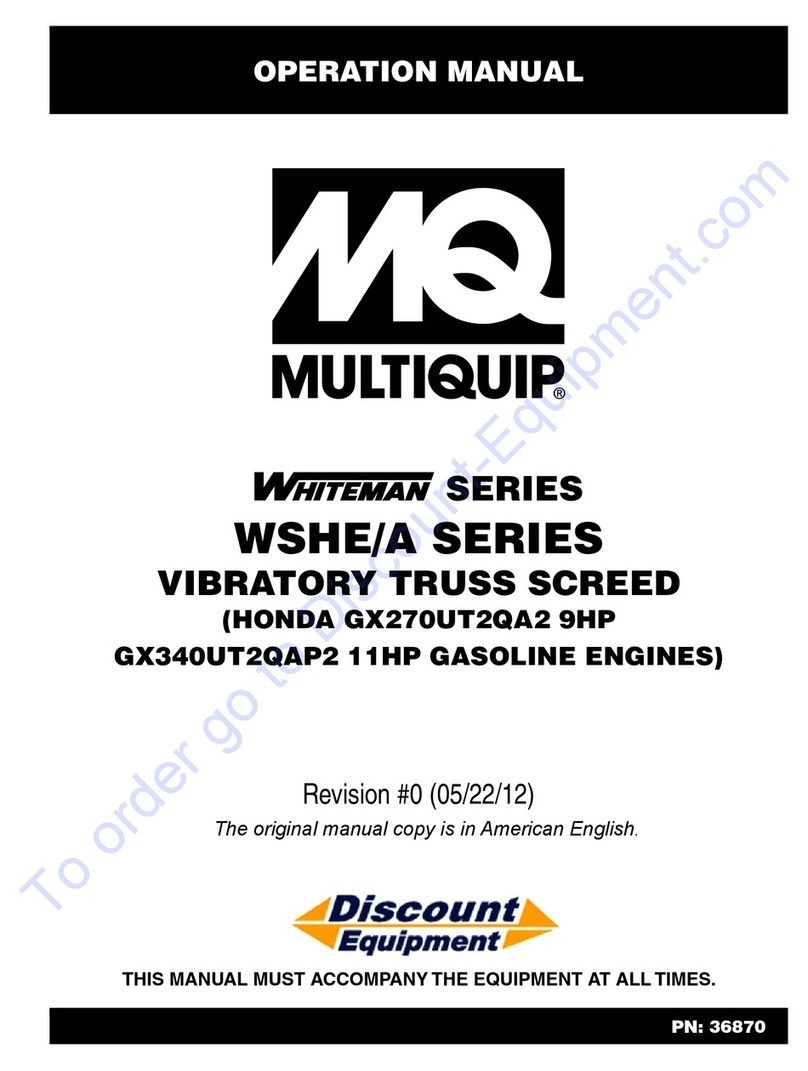
MULTIQUIP
MULTIQUIP Whiteman Series Operation manual
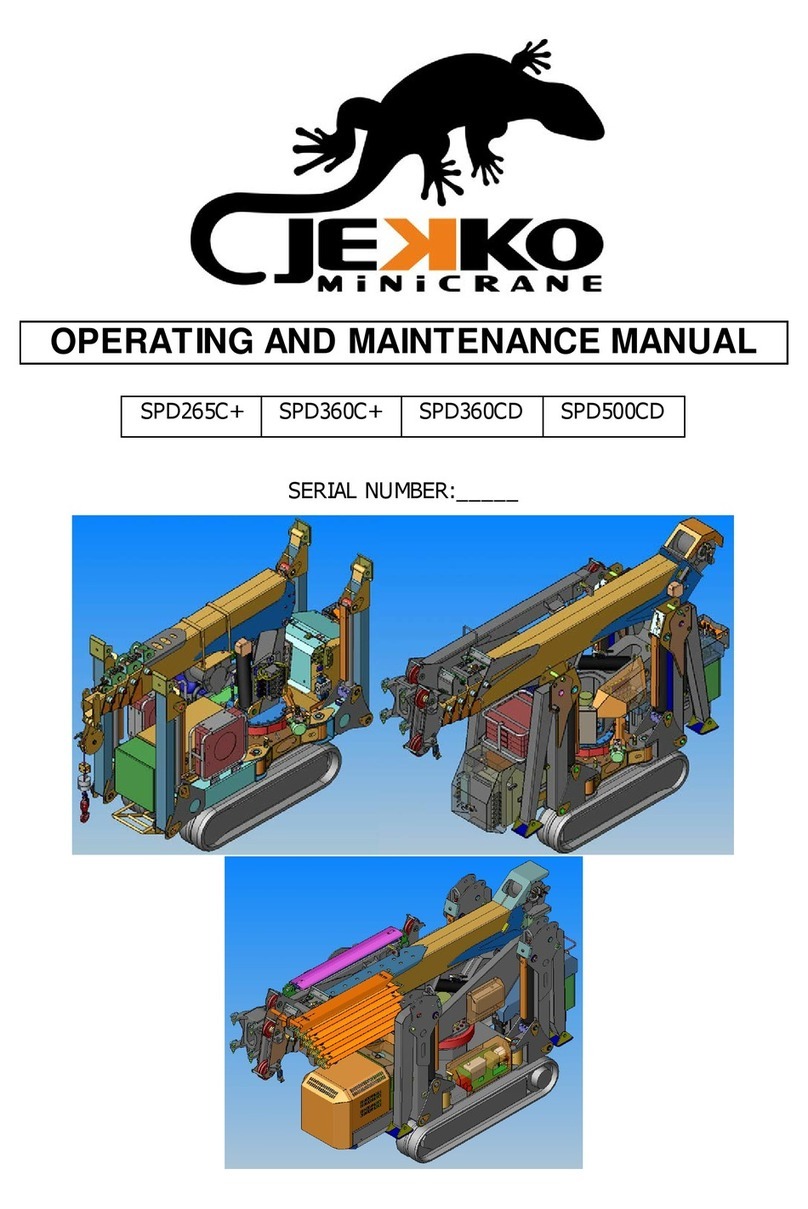
JEKKO
JEKKO SPD265C+ Operating and maintenance manual
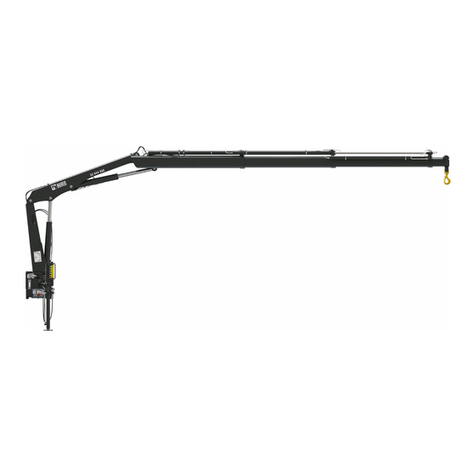
HIAB
HIAB X-Duo 044 Operator's manual
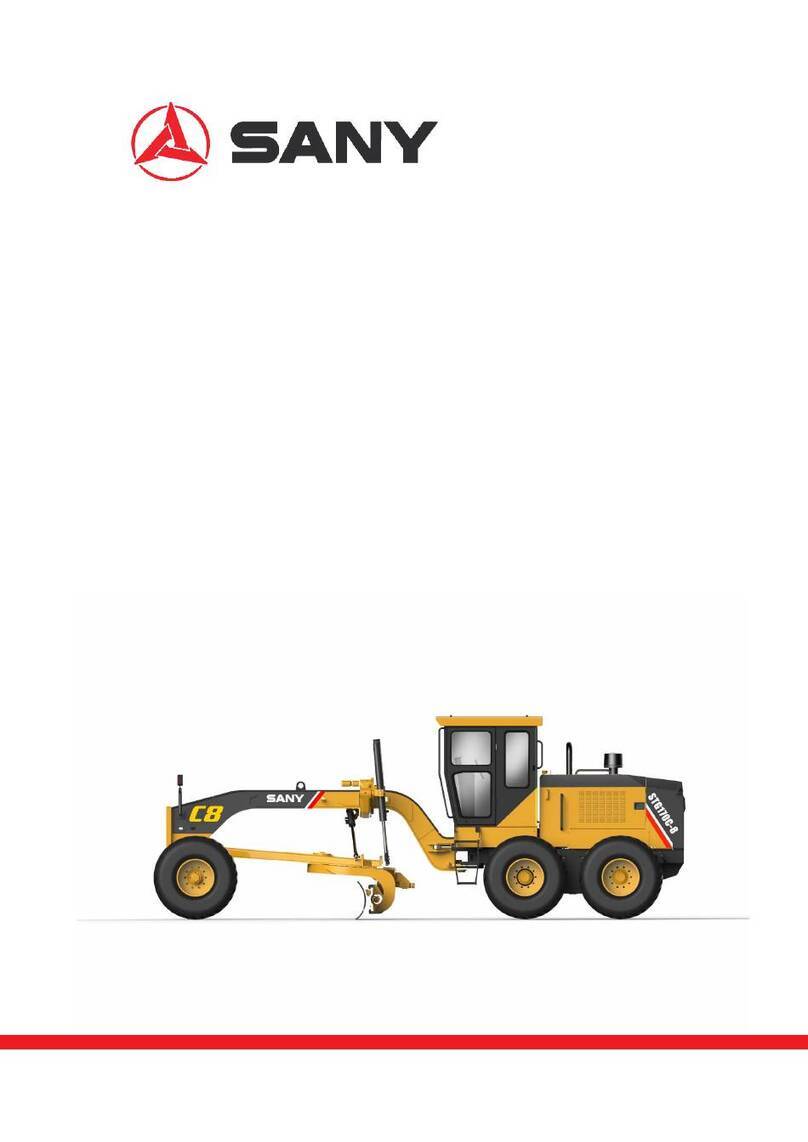
SANY
SANY STG170C-8 Safety, Operation & Maintenance Manual/Parts List
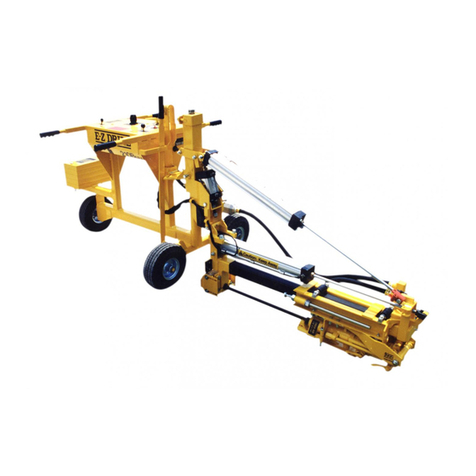
E-Z DRILL
E-Z DRILL 210B SRA Setting up
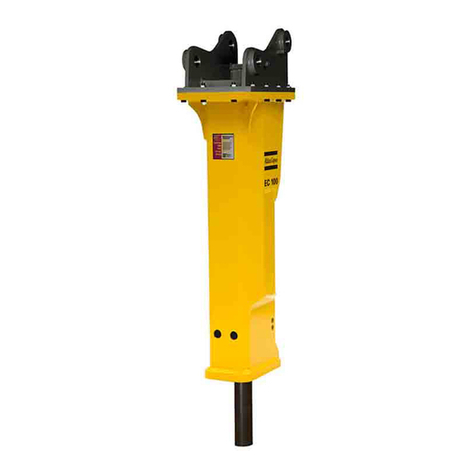
Epiroc
Epiroc EC Series Safety and operating instructions

Dremel
Dremel 3000 Operating/s Original instructions
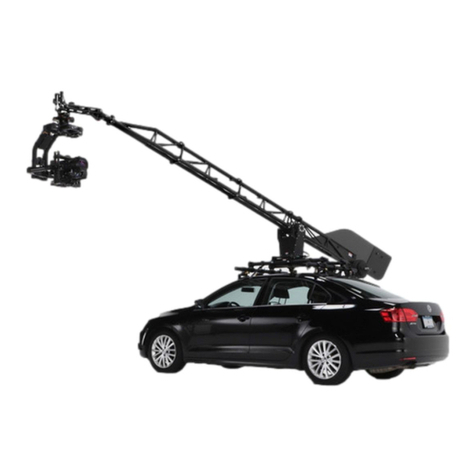
MotoCrane
MotoCrane Ultracap Power Core Operation manual
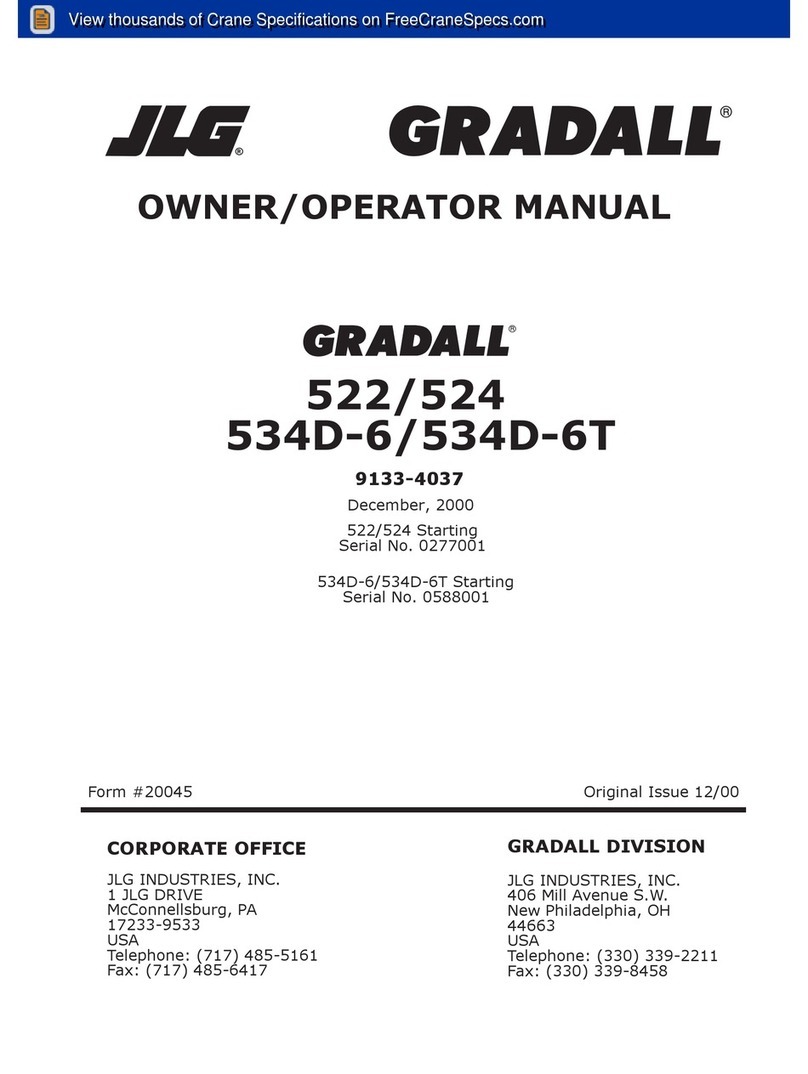
JLG
JLG GRADAL 522 Owner's/operator's manual
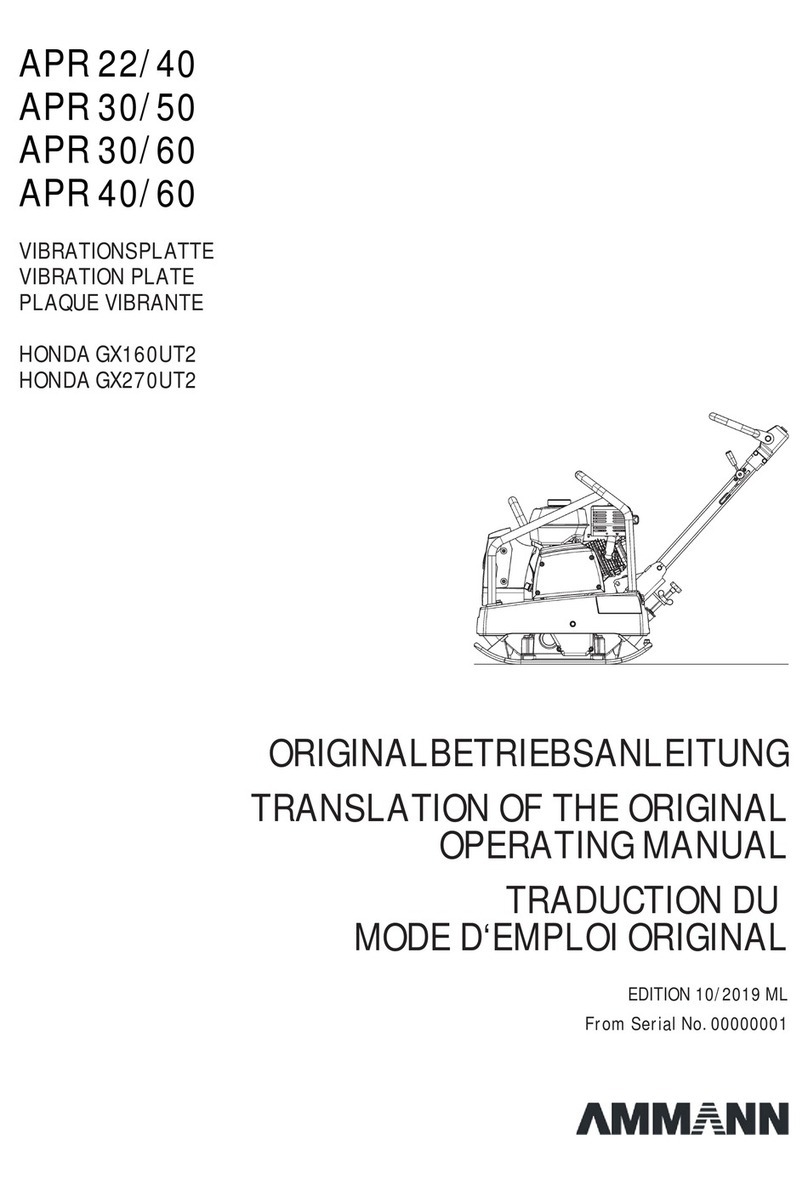
Ammann
Ammann APR 22/40 Translation of the original operating manual
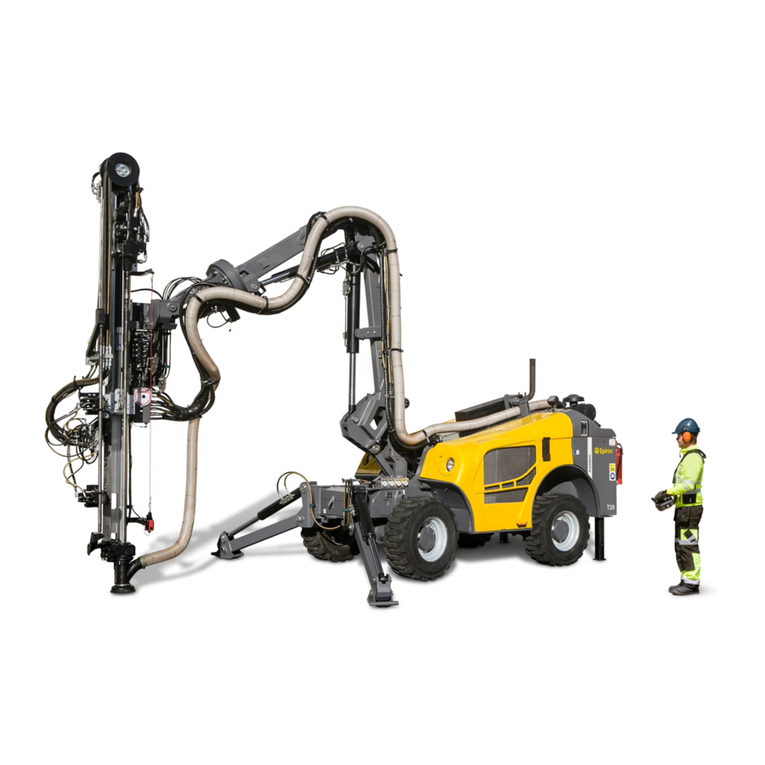
Epiroc
Epiroc Flexi ROC T20 R Maintenance schedules
